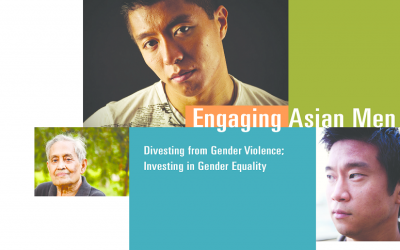Gender Democracy Vs. Gender Inequality
Gender Inequality
Gender inequality in the familial, social, and economic structures of our society is built on a foundation of sexism and misogyny. Gender violence is the most extreme expression of gender oppression: its presence tells us about the presence of inequality; the extent of the violence tells us about the extent of inequality.
In the United States:
- Women who worked full-time, year-round in 2014 earned, on average, 79% of men’s median annual earnings, even though women graduated college at a higher rate than men.
Department of Labor, Women’s Bureau: Breaking Down the Gender Wage Gap (2015) - Women represent 19% of Congress and hold 21% of cabinet-level positions in 2017.
Pew Research Center: U.S. Women in Politics & Business (2017) - At S&P 500 companies in 2017, women make up 5% of CEO positions, 10% of ‘top earners,’ 20% of board seats, and 25% of executives/senior-level officials and managers.
Catalyst: Women in S&P 500 Companies (2017)
What is Gender Democracy?
It is an ideal, a set of principles and goals where:
- Relationships are not marked by gender-specific mechanisms of power and domination
- All identities are seen as equally valid, are not marginalized or based on the traditional gender order
- Patriarchal structures do not determine social relations, and gender plays no part in the distribution of labor, positional authority, or power
What will it take to move from gender violence to gender equality?
- Making the analysis of gender central
- Making equality central
- Confronting and engaging community, culture
- Stopping men’s violence
- Building movements of solidarity
- Redesigning power to be egalitarian
- Replacing relationships of power with relationships of meaning
Resources on Gender Democracy & Inequality
From Gender Violence to Gender Democracy: What Will It Take? 2011
How do we go from cultures of power and control to cultures of equality?
Engendering Change: Transforming Gender Roles in Asian & Pacific Islander Communities, 2007
This report asks and analyzes some critical questions, forcing us to take a hard look at all the factors that have to come together to effect transformation.
Engaging Asian Men: Divesting from Gender Violence; Investing in Gender Equality, 2013
What will it take for men in our Asian communities to divest from gender violence and invest in gender equality?
Other Resources
CSAJ: What the New Poverty Data Tell Us About Addressing Domestic & Sexual Violence (2017)
UNDP: Gender Inequality Index (GII) Data
Department of Labor, Women’s Bureau:
- Data & Statistics on Women in the Work Force
- Asian American and Pacific Islander Women in the Labor Force (2015)
Pew Research Center:
- 10 Things We Learned About Gender Issues in the U.S. in 2017
- Despite Gains, Women Remain Underrepresented among U.S. Political and Business Leaders (2017)
- Other articles and data on gender
VAWnet: Special Collection on Domestic Violence & Poverty (2009)

